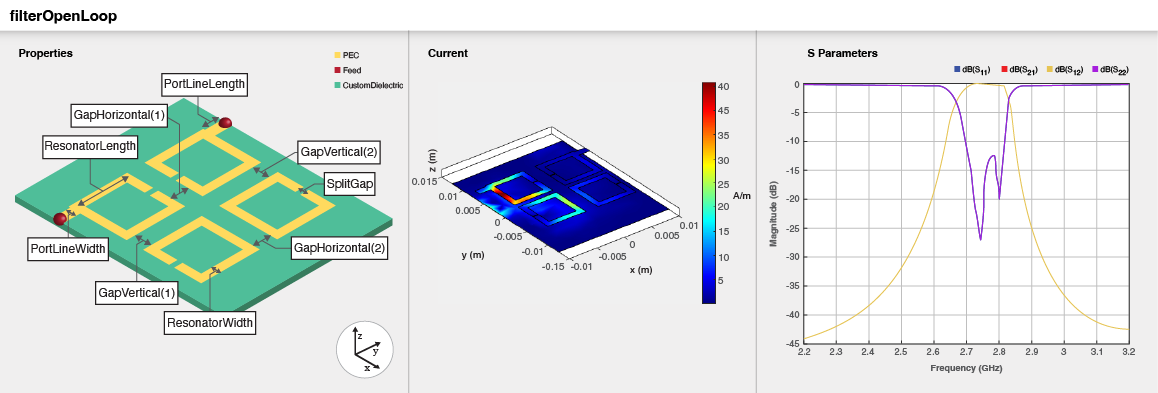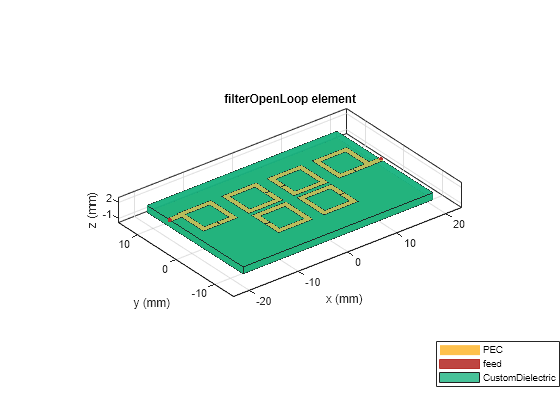filterOpenLoop
Description
Use the filterOpenLoop object to create an open-loop bandpass
filter in the microstrip form.

Creation
Description
filter = filterOpenLoop creates an open-loop bandpass filter
with default properties for a cutoff frequency of 2.75 GHz.
filter = filterOpenLoop( sets
Properties using one or more
name-value arguments. For example,
Name=Value)filterOpenLoop(ResonatorLength=0.008) creates an open-loop bandpass
filter with resonator length of 8 cm. Properties not specified retain their default
values.
Properties
Object Functions
charge | Calculate and plot charge distribution |
current | Calculate and plot current distribution |
dgs | Create defected ground structure of PCB element |
feedCurrent | Calculate current at feed port |
layout | Plot all metal layers and board shape |
mesh | Change and view mesh properties of metal or dielectric in PCB component |
shapes | Extract all metal layer shapes of PCB component |
show | Display PCB component structure or PCB shape |
sparameters | Calculate S-parameters for RF PCB objects |
RFConnector | Create RF connector |
Examples
References
[1] Pozar, David M. Microwave Engineering. 4th ed. Hoboken, NJ: Wiley, 2012.
[2] Hong, Jia-Sheng, and M. J. Lancaster. Microstrip Filters for RF/Microwave Applications. Wiley, 2001.
[3] Pal Singh, Inder, Praveen Bhatt, Dinesh Bisht. "Design of Tunable Microstrip Bandpass Cascaded Quadruplet Filter". Advances in Computer Science and Information Technology (ACIST).Vol 2, Number 12, (July -September 2015) pp 11-14.
[4] Hong, Jia-Sheng, Michael J Lancaster. "Couplings of Microstrip Square, Open-Loop Resonators or Cross-Coupled Planar Microwave Filters". IEEE Transactions on Microwave Theory and Techniques.Vol 44, Number 12, (December 1996).

